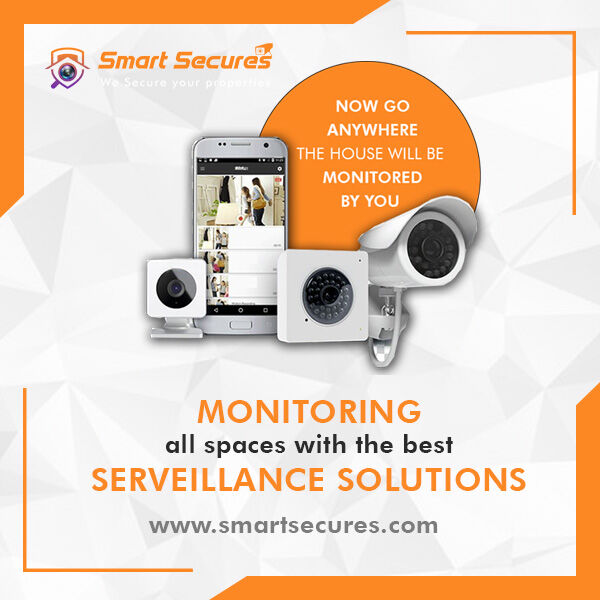
Safety cameras are essential in today’s world. These devices defend our homes, display business premises, and ensure public protection. We will explore the world of security cameras and uncover all the necessary facts.
What is the reason for security cameras?
The capture of video pictures by security cameras is used to display and report activities in exceptional environments. They accomplish three goals: deterring crime, providing evidence, and ensuring safety.
A variety of safety cameras
1. Indoor Cameras
Indoor cameras monitor the interior of buildings. They are generally smaller and less significant than outdoor models.
2. Outdoor Cameras
Weather conditions often make these cameras extra strong. They protect the exteriors of buildings and open areas.
3. Wireless Cameras
Wireless cameras can connect to a network without the need for cables. Despite their installation flexibility, a battery replacement may be essential.
4. Wired Cameras
Recording devices and power sources are connected to cameras through cables. Installing them may be challenging, but they offer a stable connection.
5. Dome Cameras
By having dome-shaped cowls, the dome cameras are less visible and less likely to be tampered with. They can be used both indoors and outdoors.
6. Bullet Cameras
Bullet cameras are cylindrical. Their high visibility provides a strong deterrent to capable intruders.
What to look for when evaluating critical capabilities
When selecting a security camera, make sure to factor in these critical capabilities:
1. Resolution
Images become clearer with higher resolution. For special photos, it’s important to have a digital camera that has at least 1080p resolution.
2. Night Vision
Cameras can record pictures in low-light conditions thanks to their night vision abilities, ensuring non-stop security.
3. Motion Detection
When motion is detected, it produces recordings or indicators. Saving storage space and receiving notifications of any interest can be achieved through this option.
5. Storage Options
Consider whether the camera utilizes cloud storage, nearby storage (SD card), or both. Local storage is a more cost-effective option than cloud storage for remote access.
The advantages of security cameras
1. Crime Deterrence
Criminals are less likely to target your property due to the presence of cameras.
2. Remote Monitoring
Current cameras offer remote access that enables you to monitor your house from anywhere using a cellphone or PC.
3. Increased Safety
Cameras monitor employees and warn of dangers, ensuring the safety of customers and their families.
What to look for when choosing a safety digicam?
1. Establish what is required
Determine the specific protection you want. Take into account factors like location, favored features, and finances.
Review the brands and styles that are readily available.
Look for manufacturers who are renowned for their reliability and friendliness. Study reviews and examine styles to find a quality suit.
3. Consider Installation
Decide if you need to install the cameras yourself or hire an expert. Some structures require less installation effort than others.
Installing your security cameras.
Proper setup is the key to achieving optimal overall performance efficiently. Below are some suggestions:
1. Organize the location of the digicam
Identify the essential areas that need to be monitored. Install cameras to monitor all access points and inclined spots.
2. Positioning and mounting
Mount cameras securely to prevent tampering. Make sure to angle them to avoid obstructions and maximize insurance.
Keeping Your Security System up-to-date
Regular maintenance is essential to ensure that your safety cameras perform successfully.
1. Rinse the lenses
Clear photos can result from cleaning digital camera lenses. Use a soft material and avoid harsh chemicals.
2. Check Connections
Inspect all cables and connections regularly to avoid disruptions in recording.
Common problems and solutions.
Problems can arise even in high-quality systems. Here are some common problems and solutions:
1. Blurry Images
Verify that the digicam lens is clear and adjust the focus to the point of interest. Check for any restrictions.
2. No Power
Check the electricity source and connections. Make sure your batteries are charged, or update them if necessary.
3. Connectivity Issues
Ensure the digicam falls within the Wi-Fi network’s coverage zone and there are no signal interferences.
The regulations and guidelines that govern security cameras
Keep up with local legal guidelines and rules regarding using surveillance cameras.
To avoid felony problems, it’s crucial to comply with privacy laws.
The future of safety cameras
The safety digicam industry is constantly advancing. Take a look at these trends:
1. Machine learning and artificial intelligence are both related.
AI-powered cameras that recognize faces, perceive gadgets, and detect uncommon activities are helpful security tools.
2. Integrating smart home technology.
Integrating innovative domestic systems with protection cameras more closely presents seamless control and automation.
Conclusion
If you don’t have security cameras, your house is in danger. Knowing the important features and rules can help you select the best system. Maintaining your system and staying up-to-date with modern developments ensures reliable and robust protection.







